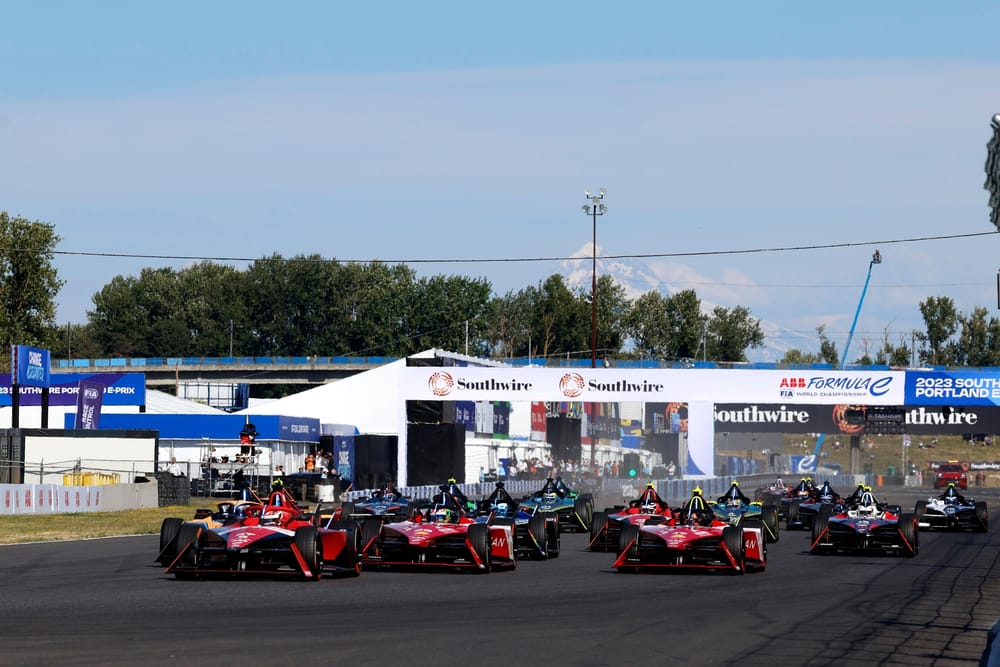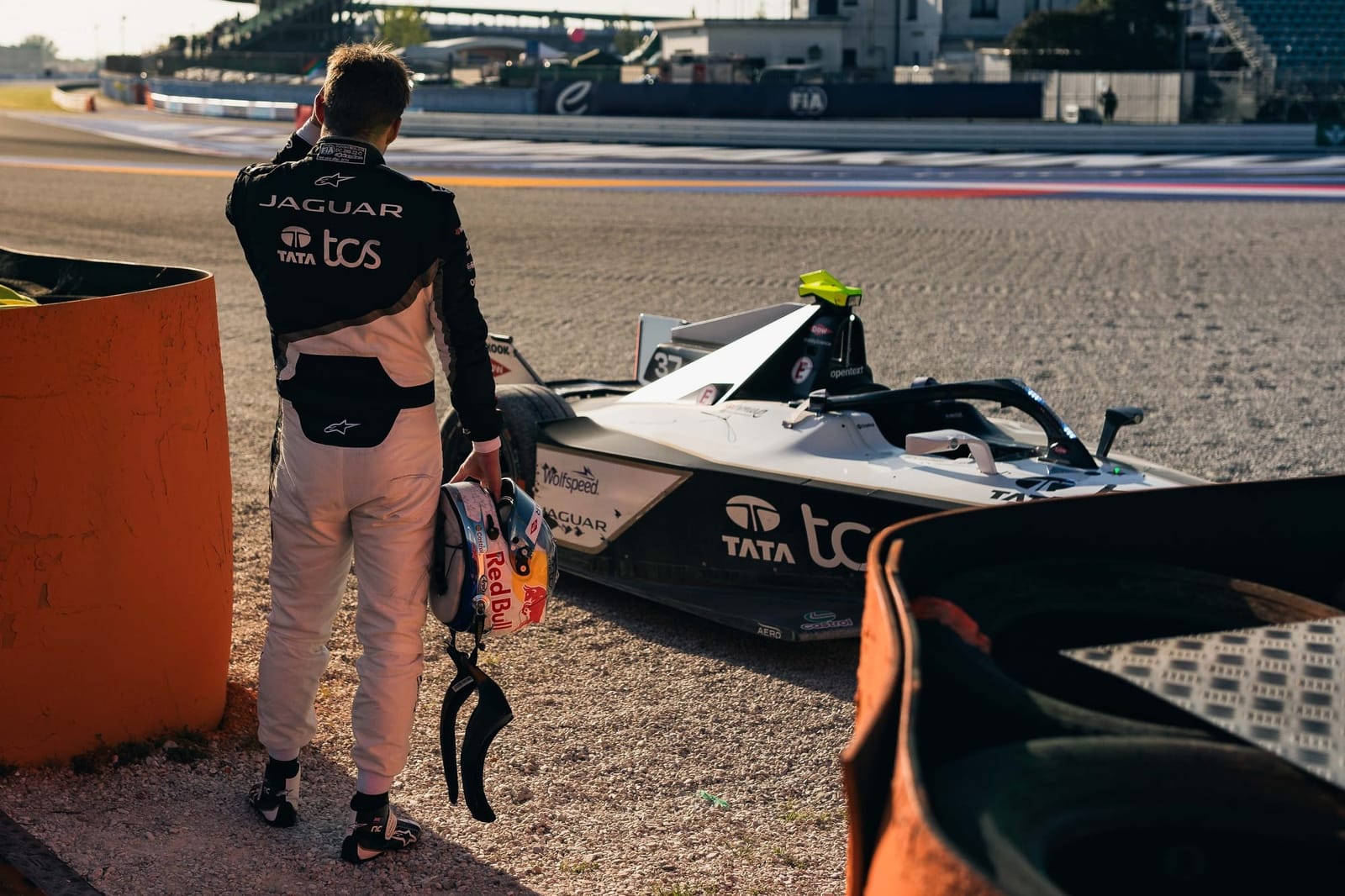A radical change was set to be introduced to the track configuration of the Portland Formula E circuit for next weekend’s E-Prix double-header, but a dramatic U-turn means it has been abandoned.
The original version of the IndyCar venue will now be used again, as per FE’s 2023 Portland debut.
A temporary chicane complex was to be inserted after the final corner and exit close to the pitlane attenuator barrier before leading on to the long main straight - as shown on the track map below that was issued to teams for their preparation work.
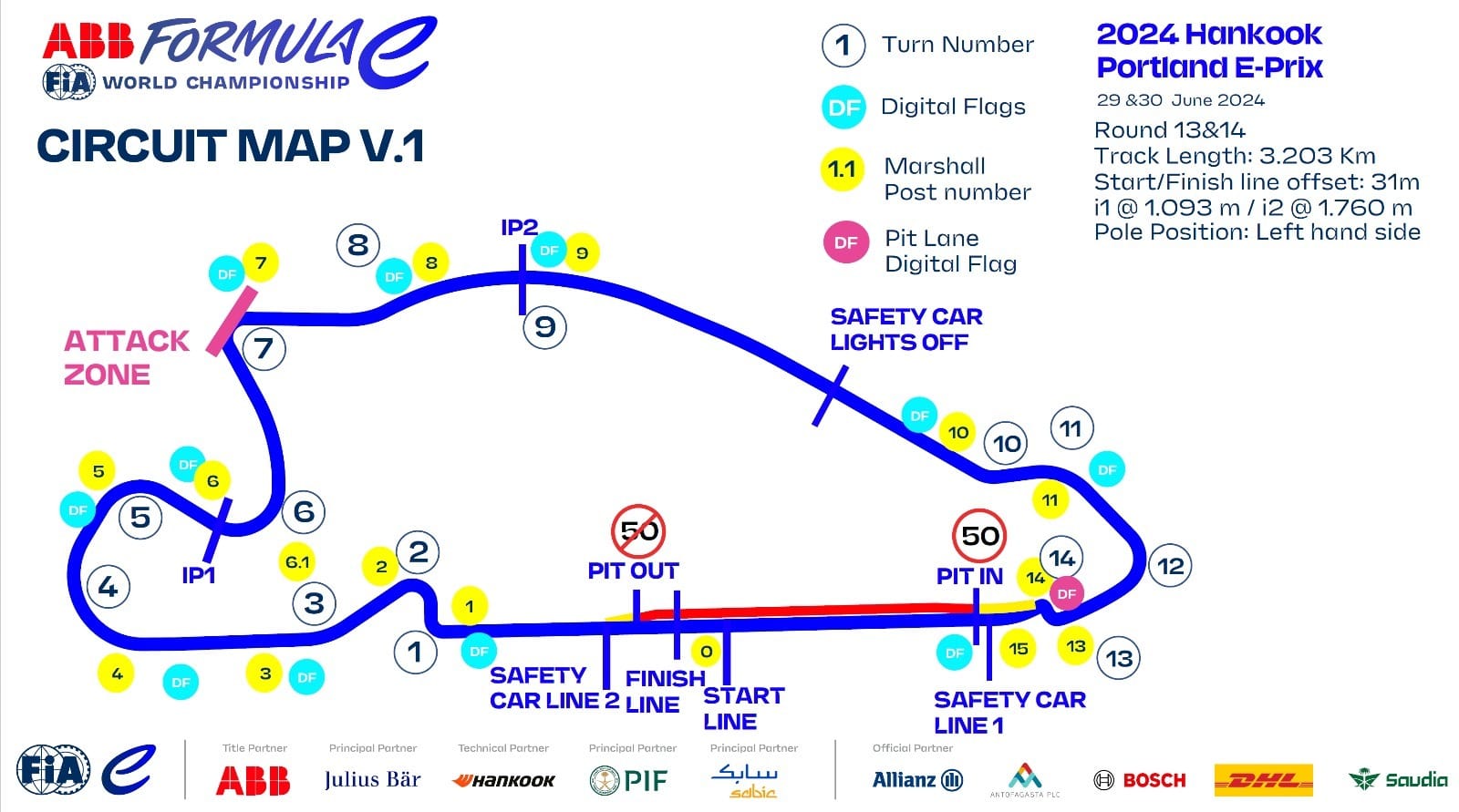
The amendment was implemented by the FIA, which sent track data for simulation purposes earlier this month. The majority of teams had completed, or were completing, their preparations this week before news of the change of mind was officially issued this morning.
The Race has uncovered that questions regarding the rationality and safety of the change triggered the abrupt rethink.
The chicane would’ve had a significant impact on the style of racing at the circuit, which was the scene of Formula E’s first extreme energy-saving pack race last year.
The series noted 403 overtaking moves, but the nature of the racing - with much of the passing just drivers lifting and coasting as they tried to avoid being at the head of the pack because they wanted to save energy in others’ slipstreams - was contentious.
Before the chicane was abandoned, an FIA spokesperson justified it to The Race as being “based on the learnings from 2023” and to “make it a bit more Formula E specific and allow for more regeneration to happen”.
That was a reference to the fast and flowing Portland layout on which only the opening chicane complex offers significant energy regeneration opportunities for the cars.
The theory was that inserting the chicane would’ve alleviated the lift-and-coast and pack racing problem.
The now scrapped new measure had been met with mixed reviews by Formula E drivers, with Abt Cupra’s Lucas di Grassi questioning the chicane’s precise location in particular.
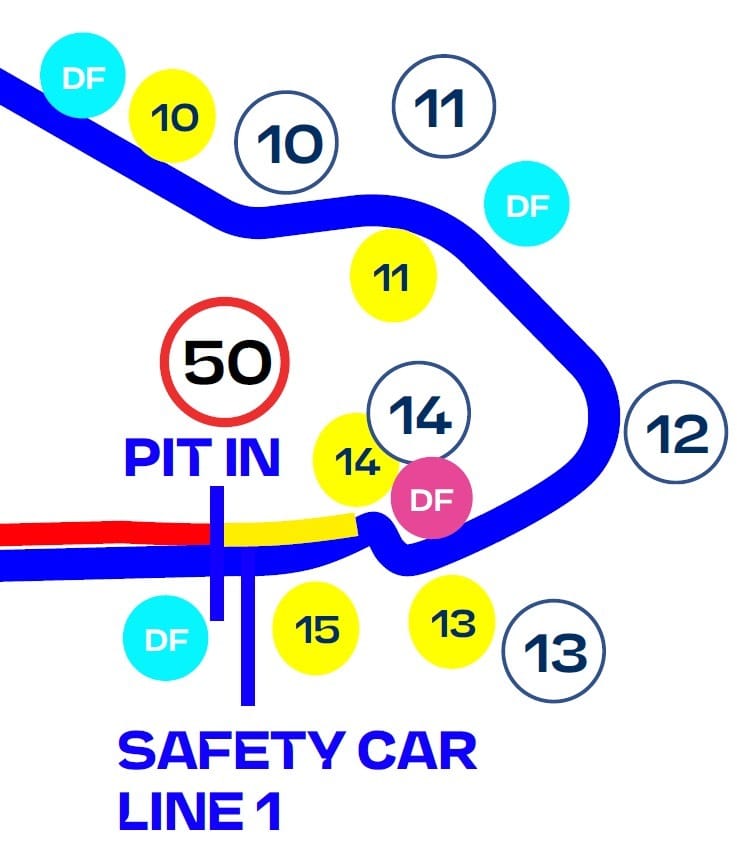
“In my view, it makes no sense for any reason that there is to be a chicane at the pit entry,” di Grassi told The Race before the U-turn was communicated.
“It will create more crashes, more complications, more traffic in qualifying. I don't like it at all.”
The Race understands that di Grassi and his Formula E track consultant committee colleagues Antonio Felix da Costa and Oliver Rowland were not approached regarding the placement of the chicane.
"We had initially considered the implementation of a chicane on Portland track layout based on our simulations and learnings from 2023," said an FIA statement issued to The Race today.
"However following further analysis and feedback from teams, we have found that the proposed changes and alternative solutions would not be feasible or fully comply with our safety requirements and therefore will not be implemented."
The final fast right-hander at Portland was one of the challenges of last season with drivers pushing their cars closer and closer to the wall on the exit, although di Grassi felt the chicane wouldn’t completely spoil this.
Andretti’s Jake Dennis was more positive about the chicane plan, saying that the extra regeneration would've made it less of a manic peloton style race than last season.
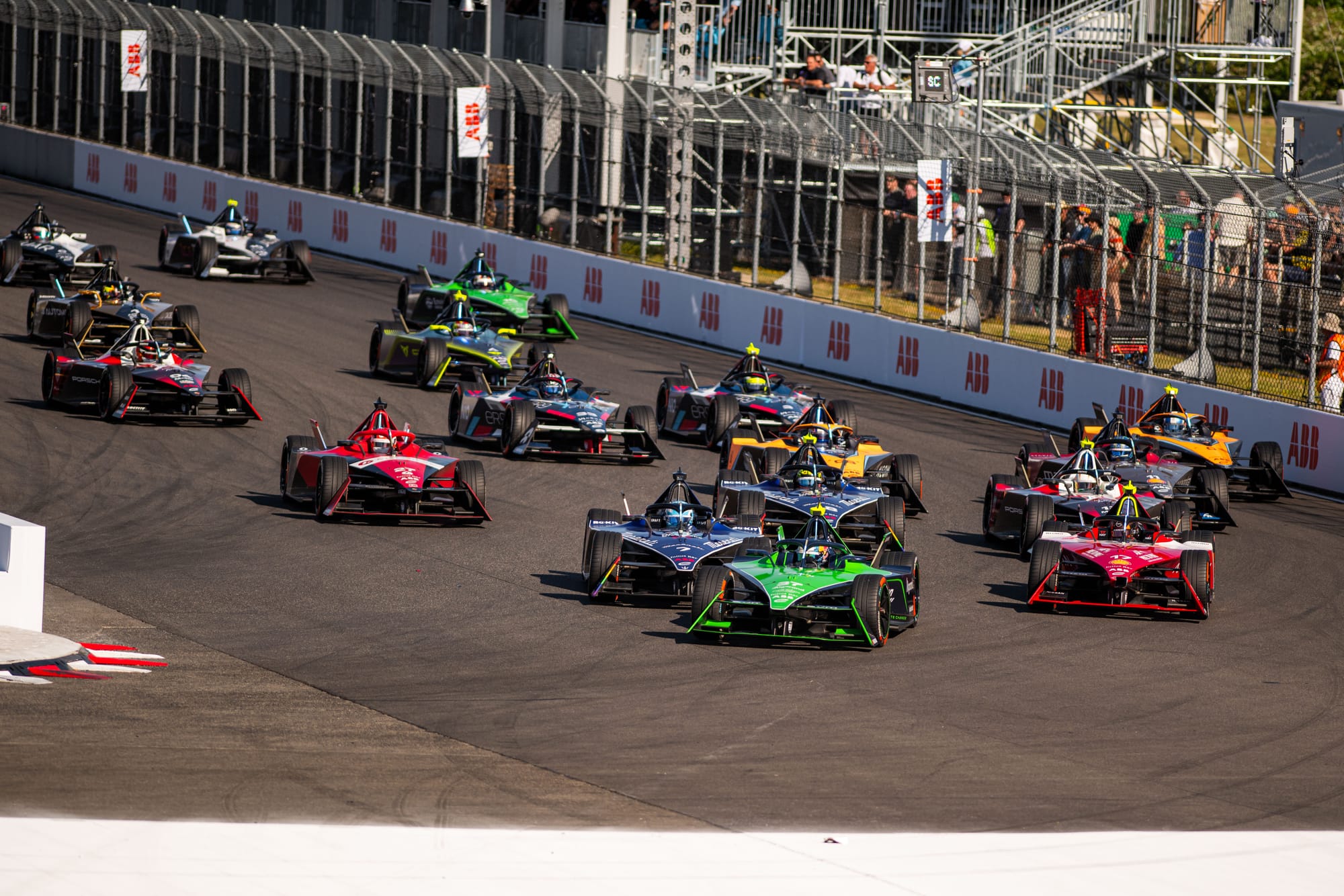
“Ultimately, I think it will mean that we have less energy saving as a chicane like that will offer a big recharge that will help with energy management,” Dennis told The Race before the U-turn was made today.
The drivers were set to have their first experience of the new-look track with an initial shakedown session next Friday before a first free practice shortly after. They will now revert to old data or organise new sim sessions in the remainder of this week around the original track map.
The Race says…
Sometimes the FIA must feel they are damned if they do and damned if they don’t when it comes to achieving the right balance of layouts and energy allocations to create ideal Formula E racing.
The planned new chicane at Portland looked unnecessarily close to the pit entry. It would also likely have created flashpoints with drivers attempting to create gaps for flying laps, something that had already contributed to a serious accident for Nick Cassidy at Misano earlier this season.
Creating the sweet spot between chaotic pack-racing littered with meaningless passing and flat-out competition that rewards meritocratic hierarchy but offers little overtaking is proving difficult.
The race-makers clearly didn’t get the cocktail right for round one at Mexico City, which featured precious little action and contributed to a general drab 2024 opener.
At Diriyah a few weeks later it was a little bit better but still desperately difficult to pull off genuine overtakes (not the inconsequential ones that Formula E promotes).
In Sao Paulo the pack-racing madness was back with a flourish. And while it was more the toasty thermal temperatures that contributed to one of the all-time great Formula E finishes, the mix of energy saving and genuine racing was pretty decent.
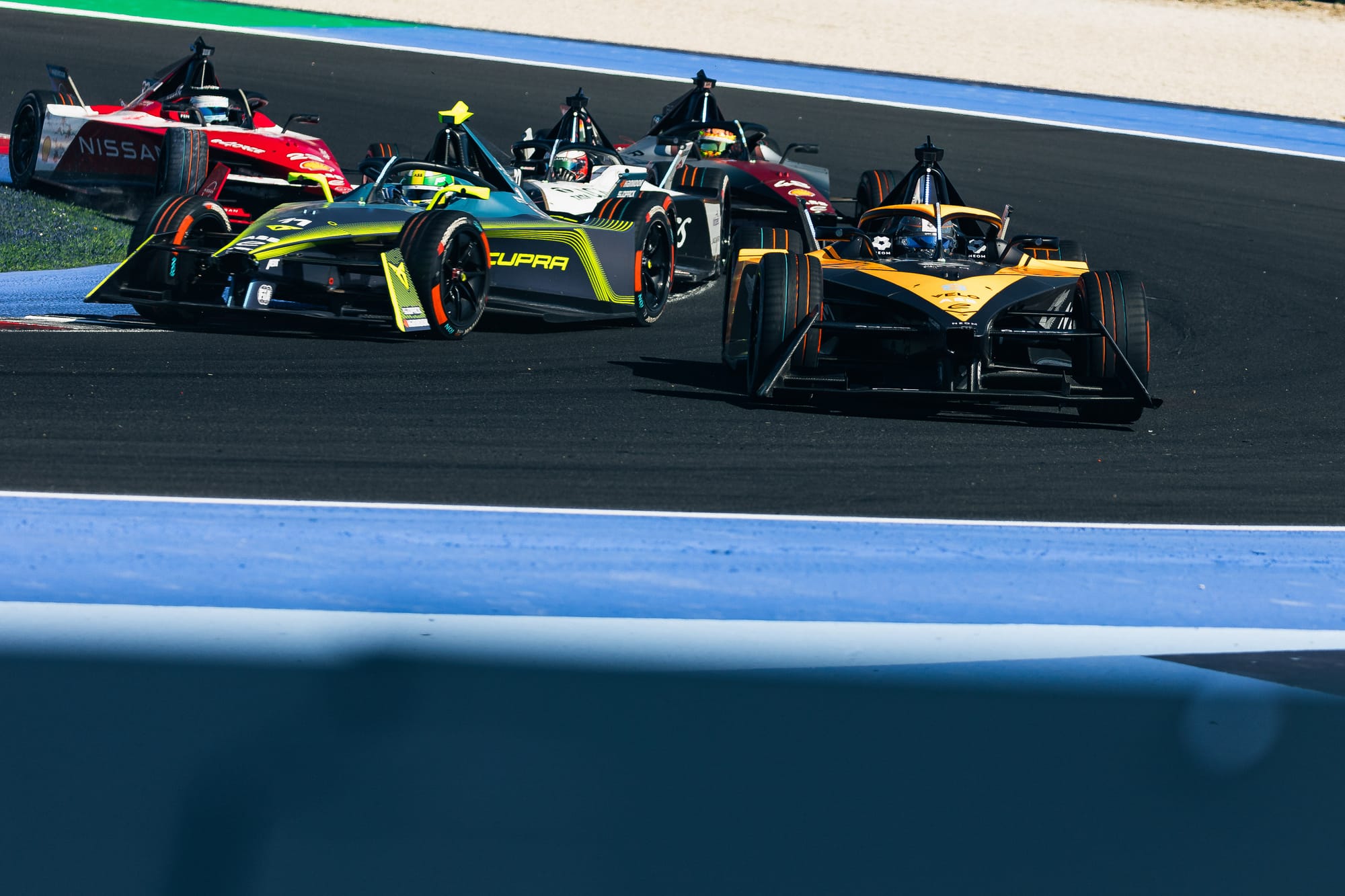
The next races at Misano were again high energy-saving in the early exchanges. But with a lap discrepancy between the Saturday and Sunday events, it was the latter which just tipped over into a reasonable race rather than a mad tombola full of chance and contact like the Saturday bedlam.
Monaco was a more straightforward and relatively flat-out race, while Berlin was the inevitable energy-save fiesta, albeit one that had reduced attack mode power time because of concerns about the duty cycle of the spec batteries.
This was significant and was also carried over for the Shanghai races last month, which again featured a fair amount of contact and bitter rebukes, mostly thanks to the usable energy, track configuration and the location of an accordion-shunt-inducing chicane at the end of the lap.
The RESS batteries supplied by Fortescue WAE, formerly Williams Advanced Engineering, still cause concerns, as they will be required for another two seasons after this campaign and clearly require at least a comprehensive refresh.
That apart, the final and likely crucial title-deciding weekend in London in mid-July will likely have a much greater element of flat-out racing and is likely to reward those that will qualify well.
For now, Portland will offer the same lift-and-coast challenge as it did in 2023. The potentially race-changing new (now old) chicane will be consigned to just the drivers' simulator memories.
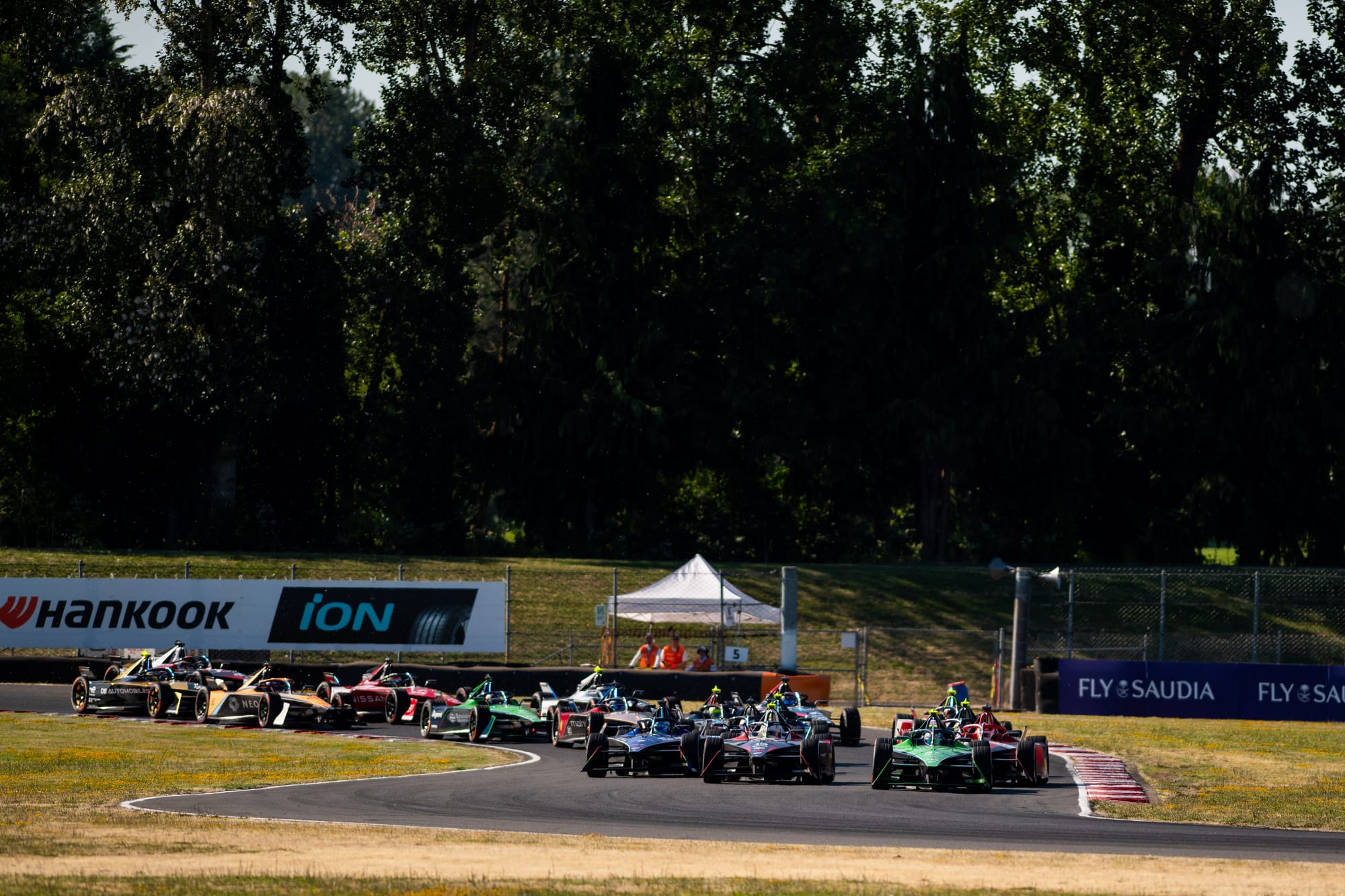
It’s been an embarrassing saga for the FIA, no doubt, and not one really befitting of a world championship. The teams and drivers have wasted valuable time and resources preparing for the chicane layout in the last 10 days or so at a time when they are also trying to juggle the continuing development of their Gen3 Evo packages
It means the Portland track configuration will continue to be a talking point, which has some irony given it will host Formula E races for the last time next weekend. The Homestead track near Miami has usurped it to become Formula E's new United States home from 2025.

